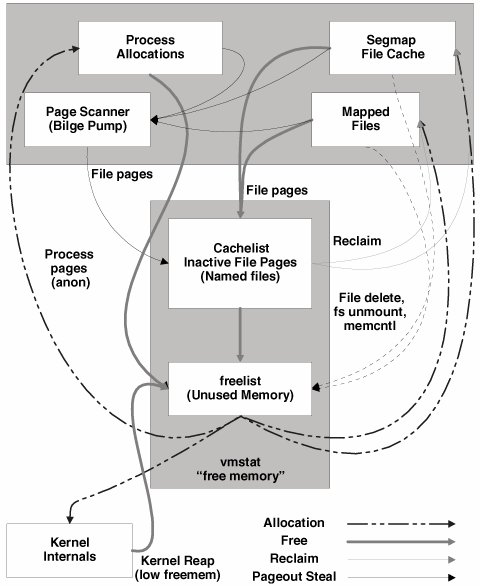File system "page cache." The page cache is used for caching of file data for file systems other than the ZFS file system. The file system page cache grows on demand to consume available physical memory as a file cache and caches file data in page-size chunks. Pages are consumed from the freelist as files are read into memory. The pages then reside in one of three places: the segmap cache, a process's address space to which they are mapped, or on the cachelist.
The cachelist is the heart of the page cache. All unmapped file pages reside on the cachelist. Working in conjunction with the cache list are mapped files and the segmap cache.
Think of the segmap file cache as the fast first level file system read/write cache. segmap is a cache that holds file data read and written through the read and write system calls. Memory is allocated from the freelist to satisfy a read of a new file page, which then resides in the segmap file cache. File pages are eventually moved from the segmap cache to the cachelist to make room for more pages in the segmap cache.
The cachelist is typically 12% of the physical memory size on SPARC systems. The segmap cache works in conjunction with the system cachelist to cache file data. When files are accessed through the read and write system calls, up to 12% of the physical memory file data resides in the segmap cache and the remainder is on the cache list.
Memory mapped files also allocate memory from the freelist and remain allocated in memory for the duration of the mapping or unless a global memory shortage occurs. When a file is unmapped (explicitly or with madvise), file pages are returned to the cache list.
The cachelist operates as part of the freelist. When the freelist is depleted, allocations are made from the oldest pages in the cachelist. This allows the file system page cache to grow to consume all available memory and to dynamically shrink as memory is required for other purposes.
